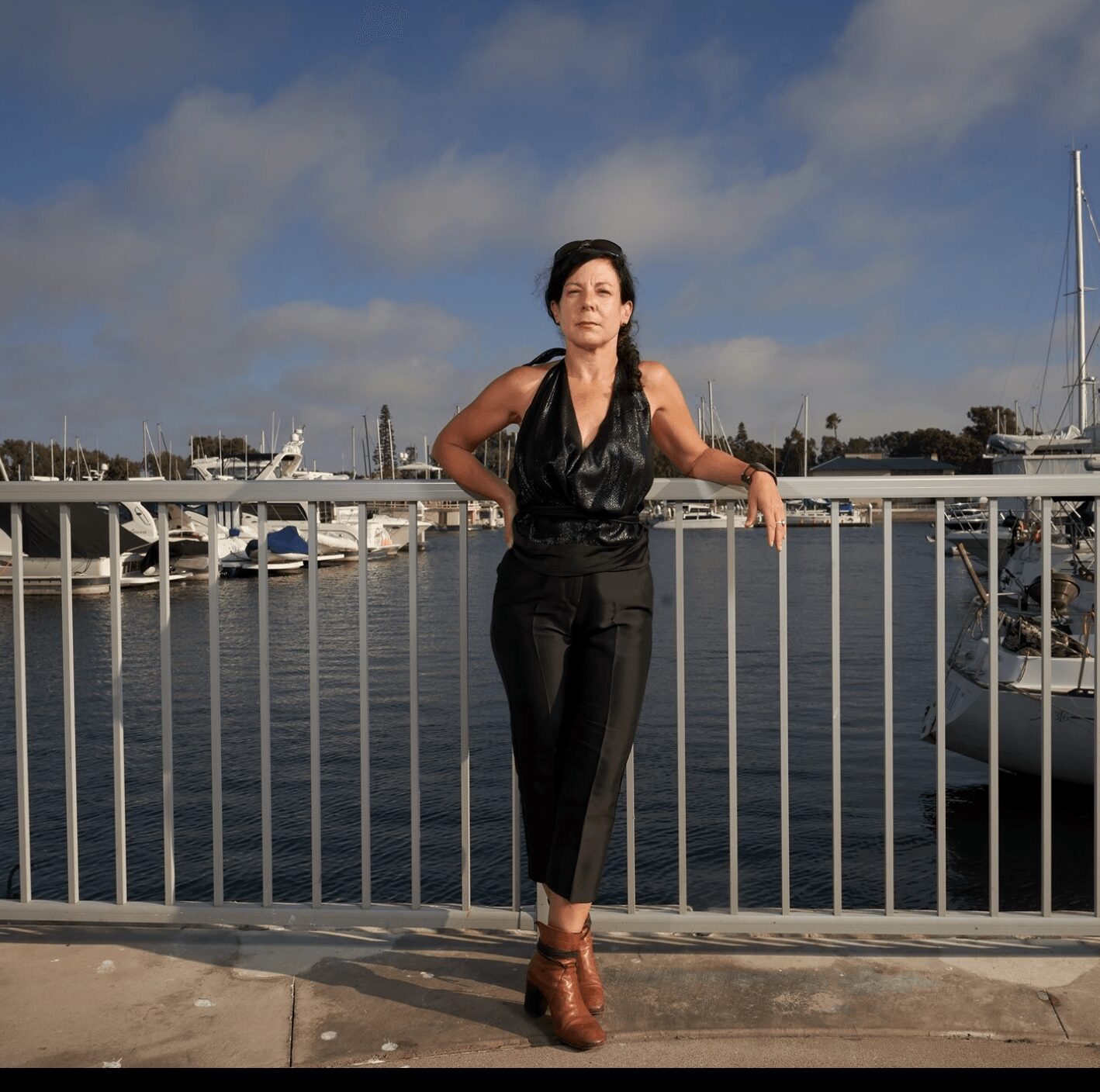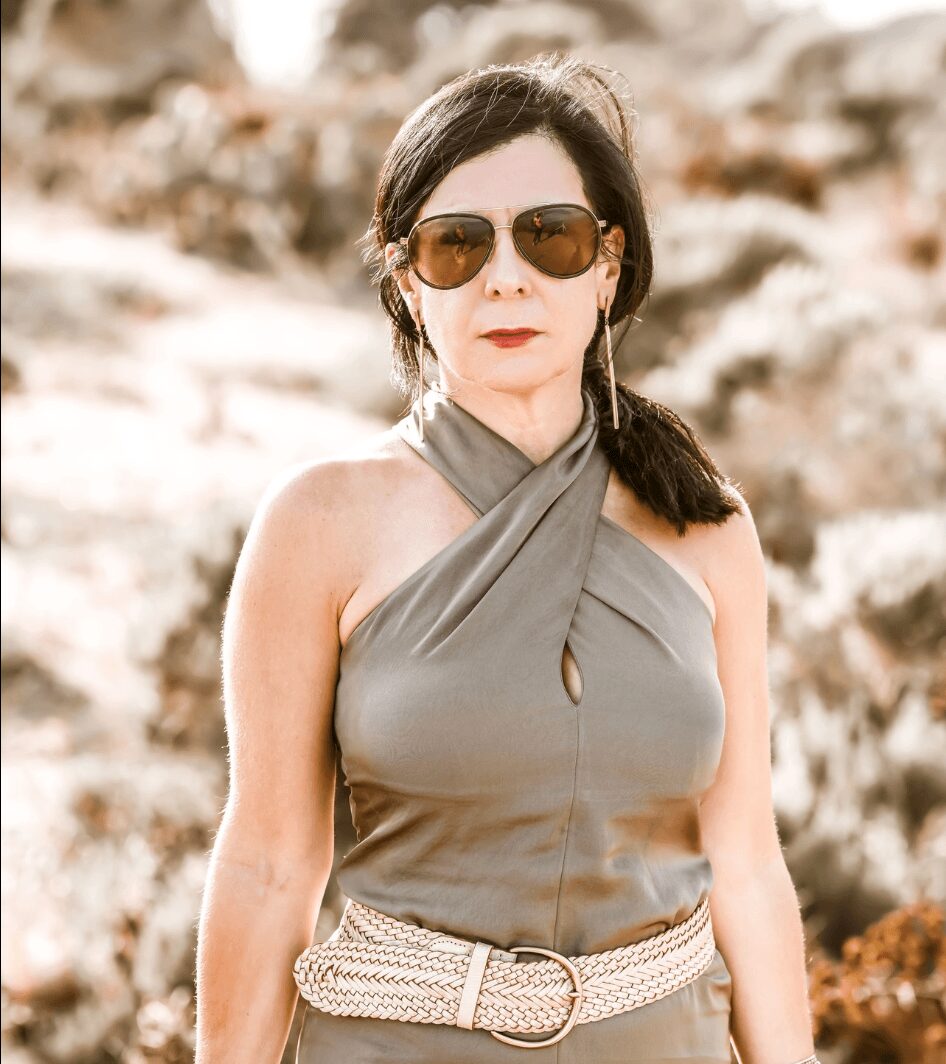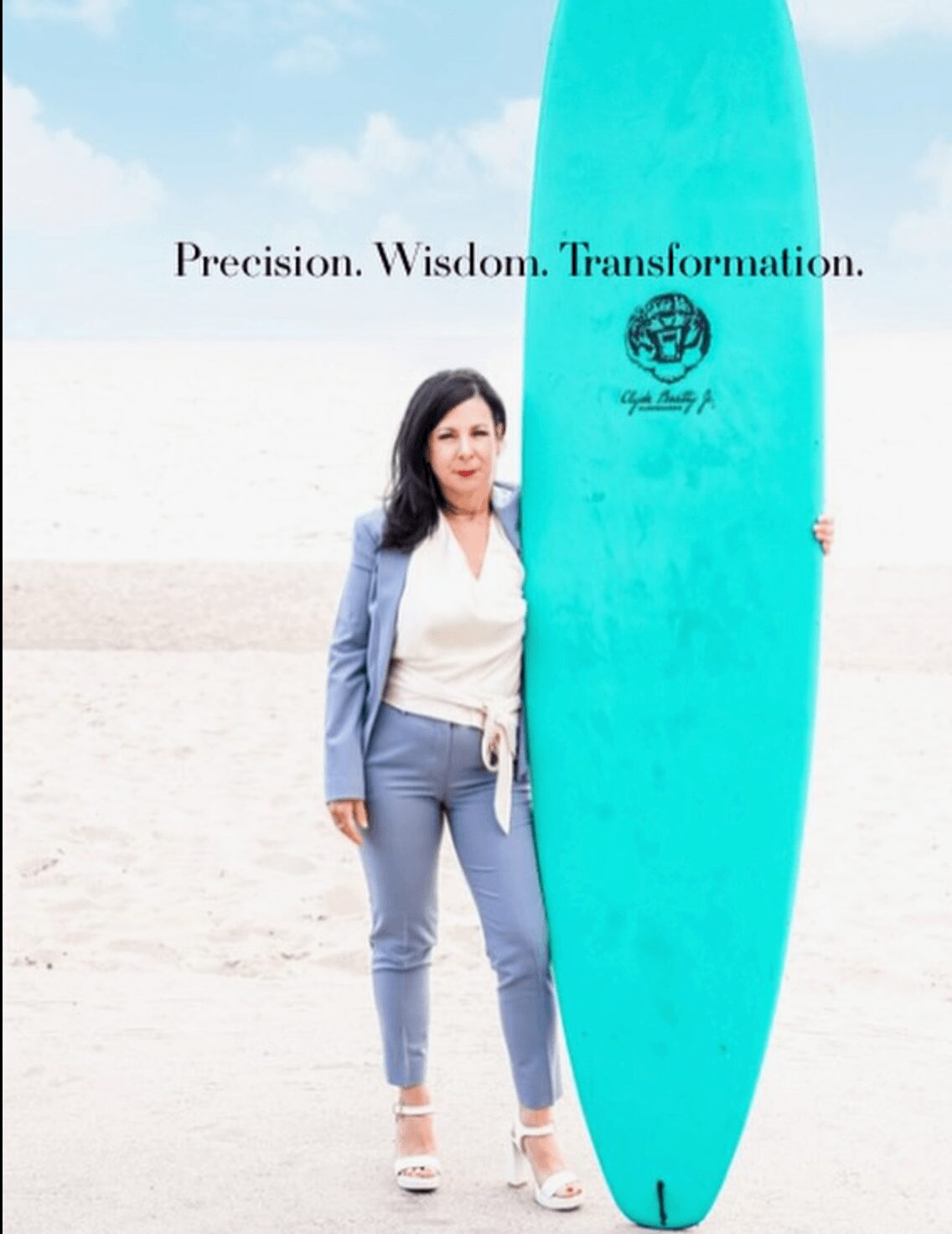

We recently had the chance to connect with LINDSAY ANASTASIO and have shared our conversation below.
LINDSAY, we’re thrilled to have you with us today. Before we jump into your intro and the heart of the interview, let’s start with a bit of an ice breaker: What are you being called to do now, that you may have been afraid of before?
I’m being called to lead from a place of complete authenticity—something that terrifies and liberates me simultaneously.
For years, I operated from survival patterns learned in male-dominated industries. The military taught me to compartmentalize pain. Wall Street rewarded me for suppressing my intuition. I became masterful at pushing through, proving my worth, and hiding the parts of myself that felt too vulnerable to expose in boardrooms and barracks.
But those old strategies have hit a ceiling. The very armor that protected me is now what’s limiting my impact.
I’m being called to release the trauma and childhood wounds that have kept me small, to stop letting past treatment define my present power. Most challenging of all, I’m being called to show up consistently—not just when I feel strong, but especially when things get difficult.
The old pattern was to oscillate: peak performance followed by retreating into rabbit holes when challenges arose. I’ve realized that authentic leadership—the kind that creates real transformation in my clients—requires me to stay present through the discomfort, to take breaks without disappearing, to process without hiding.
This terrifies me because it means being seen fully. But I’ve discovered that my clients can only go as deep as I’m willing to go. My breakthrough becomes their permission. My willingness to stay present in challenge becomes their model for resilience.
I’m learning that true leadership isn’t about having it all figured out—it’s about showing up authentically, consistently, and courageously, especially when everything in me wants to retreat.
This is the work now: becoming the leader I needed when I was hiding behind achievements, so I can guide others home to their authentic power.
Can you briefly introduce yourself and share what makes you or your brand unique?
I’m Lindsay Anastasio, founder of LA Woman Training (LAWT), and I’ve spent my career proving that extraordinary performance comes from integrating seemingly opposite approaches—military discipline with spiritual wisdom, Wall Street strategy with ancient practices, data-driven precision with intuitive breakthrough.
As a U.S. Army veteran turned Wall Street fintech executive with an MBA from Pepperdine, I understand what it takes to perform at elite levels across demanding industries. But what makes LAWT unique is how I’ve synthesized this high-performance background with deep training in movement sciences—I’m certified in personal training, Pilates, yoga (200+ hours), and currently training with Navy SEAL coaches while pursuing advanced certifications in India.
What makes LAWT different? Every session is designed as a “mini retreat experience”—a sacred container where high-achieving executives, entrepreneurs, leaders, artists, and creatives don’t just work out, they breakthrough. We’re not fixing problems; we’re optimizing potential. My clients are successful people ready to access their next level of capability, whether that’s peak performance states on demand, authentic leadership presence, or creative flow.
The magic happens at the intersection of precision and transformation. I bring military-grade discipline to goal achievement, executive-level strategy to progress tracking, and retreat-level depth to personal breakthrough. My methodology proves that your body isn’t just a machine to optimize—it’s the gateway to mental mastery, creative genius, and authentic power.
Currently, I’m working on expanding LAWT’s reach while deepening my own training. The same principles that transform my clients—showing up consistently, integrating all aspects of performance, and never stopping the evolution—drive everything I do.
Because here’s what I know: you don’t know your limits, and neither do your clients until you show them what’s possible.
Okay, so here’s a deep one: What was your earliest memory of feeling powerful?
I was barely eighteen, living on Long Island, and completely lost. On the outside, I was doing what teenagers do—partying, attending community college, waitressing. But inside, I was a hot mess with no direction, heading down a really dangerous path. I felt hopeless, like I was drowning in my own life.
Then I hit rock bottom—one of those moments where you either break completely or something deeper kicks in. For me, it was hearing this inner sage voice that I hadn’t listened to in years, maybe ever. Around the same time, “G.I. Jane” came out, and watching Demi Moore’s performance ignited something in me. I saw her reclaim her power, her voice, her strength—everything I felt had been taken from me since I was a young child.
That’s when I knew I had to find an Army recruiter.
What happened next still gives me chills. Every morning at 4:30 AM, I would sneak out of my family’s house. My recruiter would be waiting outside, ready to drive me to medical exams and testing. I didn’t tell anyone—not my family, not even my best friend. This was my secret mission to reclaim myself.
The moment I felt truly powerful wasn’t when I finally told everyone or even when I left for basic training. It was during those pre-dawn drives, sitting in that recruiter’s car, knowing I was taking my life into my own hands. I was choosing courage over comfort, growth over stagnation, my authentic power over the version of myself that felt safe but small.
I had listened to that inner voice and acted on it, despite every external circumstance suggesting I should stay stuck. For the first time in my life, I wasn’t a victim of my circumstances—I was the author of my transformation.
That experience taught me that real power isn’t loud or dramatic. It’s the quiet decision to choose yourself when no one else is watching, to trust your inner knowing even when it terrifies you, and to take action toward who you’re meant to become.
What did suffering teach you that success never could?
Success taught me how to achieve, but suffering taught me how to be human.
All those years climbing ladders—military ranks, corporate hierarchies, academic achievements—I thought strength meant having it all together. Success rewarded me for compartmentalizing, for pushing through, for never showing weakness. I became masterful at performance, but I was losing my humanity in the process.
Suffering humbled me in ways that no promotion or recognition ever could. When you’ve walked through hell multiple times—and I have—something profound shifts. You stop judging people because you realize we’re all just doing the best we can with what we have in any given moment. You understand that only the truly hurt, hurt others.
My compassion for humans and all life expanded exponentially through my own pain. When you’ve been broken down completely, you recognize that brokenness in others not as weakness, but as part of the human experience. You see the courage it takes just to show up some days.
Success taught me to hide my struggles. Suffering taught me that my struggles were my greatest teachers and, ultimately, my greatest gifts to others.
The military taught me discipline, Wall Street taught me strategy, but it was my darkest moments that taught me empathy, presence, and authentic power. Those times when I had nothing left to prove and nowhere to hide—that’s when I learned what real strength looks like.
Now, when clients come to me carrying their own pain, I don’t see them as broken. I see them as brave souls ready for initiation. Because I know that our deepest wounds often become our greatest wisdom, and our most painful experiences can become our most powerful medicine—not just for ourselves, but for everyone we’re meant to serve.
Suffering taught me that vulnerability isn’t the opposite of strength—it’s the birthplace of it.
Next, maybe we can discuss some of your foundational philosophies and views? What important truth do very few people agree with you on?
That we’re living in a quantum reality where consciousness and matter dance together in ways that completely redefine what’s possible—and most people think I’m crazy when I mention this at the grocery store.
I’ve been studying quantum physics as a hobby for decades, not just intellectually but as a lens through which I see everything. Once you understand concepts like observer effect, entanglement, and the role of consciousness in collapsing wave functions, you can’t unsee it. You start recognizing these principles everywhere—in relationships, in performance, in transformation itself.
But here’s what really gets people: I believe quantum physics isn’t revealing new truths—it’s validating ancient wisdom and gnosis that mystics, yogis, and indigenous peoples have known for millennia. The idea that consciousness creates reality, that everything is interconnected, that observation changes outcomes—this isn’t revolutionary science, it’s timeless wisdom finally being proven in laboratories.
This understanding completely changes how I approach training and transformation. When I tell clients that their self-image literally determines their physical capabilities, or that their belief systems create their reality at a cellular level, I’m not speaking metaphorically. I’m talking about measurable, quantum mechanical principles.
Most people want to keep their spirituality and science in separate boxes. They’ll accept that thoughts affect outcomes in theory, but they resist the radical implications—that we’re far more powerful creators of our reality than we’ve been taught to believe.
It’s quite the dance, living with this awareness. You can’t exactly bring up wave-particle duality while waiting in the grocery line, even though you’re witnessing quantum principles in every human interaction around you.
But this understanding is the foundation of everything I do. Because once you truly grasp that consciousness and matter are intimately connected, transformation isn’t just possible—it’s inevitable.
Okay, so before we go, let’s tackle one more area. Have you ever gotten what you wanted, and found it did not satisfy you?
Yes—money. Multiple times.
There have been several occasions where I received large sums of money that I thought would finally give me security, freedom, and peace of mind. Instead, I felt more empty, more neurotic, and more anxious than before I had it.
The problem wasn’t the money itself—it was my scarcity programming running the show. Our old paradigm is so deeply rooted in scarcity that even when abundance shows up, we can’t actually receive it. Instead of feeling grateful or free, I would immediately shift into hoarding mode, clinging to every dollar for dear life, constantly calculating how long it would last, terrified it would disappear.
The money became a prison rather than liberation because I was viewing it through a lens of “not enough.” No amount could ever satisfy a scarcity mindset—there’s literally never enough when you’re operating from that frequency.
What I discovered is that the external achievement of wealth means nothing if your internal operating system is still running on fear and lack. I had achieved what I thought I wanted, but I hadn’t evolved the consciousness to actually enjoy or utilize it effectively.
This taught me that true satisfaction doesn’t come from getting what you want—it comes from transforming who you are in relationship to what you have. The same amount of money can feel like scarcity or abundance depending entirely on your internal state.
Now I understand that money is just energy, and like all energy, it flows best when it’s not gripped with fear. The real work isn’t accumulating wealth—it’s evolving beyond the scarcity programming that makes us incapable of actually receiving what we’ve created.
The emptiness I felt wasn’t because money couldn’t satisfy me. It was because I wasn’t evolved enough to let it.
Contact Info:
- Website: https://www.lawomantraining.com/
- Linkedin: https://www.linkedin.com/in/lindsayanastasio/


Image Credits
Dana Ruben, Pepperdine University














